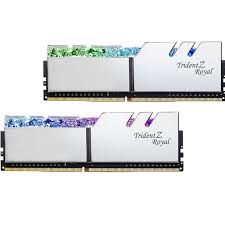The Significance of 3600MHz Memory Speed
When it comes to computer memory, one important factor to consider is the memory speed, measured in MHz (megahertz). The memory speed determines how quickly data can be accessed and processed by the computer’s CPU, impacting overall system performance.
One of the popular memory speeds available in the market today is 3600MHz. This high-speed memory offers several benefits for users looking to optimize their system performance.
Improved System Responsiveness
With a memory speed of 3600MHz, data can be accessed and transferred at a faster rate, resulting in improved system responsiveness. This means that applications load quicker, multitasking becomes smoother, and overall system performance is enhanced.
Enhanced Gaming Experience
For gamers, having a memory speed of 3600MHz can lead to a more immersive gaming experience. Games can run more smoothly with reduced loading times and improved frame rates, providing a competitive edge in fast-paced gaming environments.
Optimal for Content Creation
Content creators who work with resource-intensive applications such as video editing software or graphic design tools can benefit from the high-speed performance of 3600MHz memory. Rendering times are reduced, allowing for faster workflow and increased productivity.
Compatibility Considerations
It is important to note that not all systems may support 3600MHz memory speed. Before upgrading your system’s memory to 3600MHz, ensure that your motherboard and CPU are compatible with this higher speed. Additionally, enabling XMP (Extreme Memory Profile) in the BIOS may be necessary to achieve the full potential of 3600MHz memory.
Conclusion
In conclusion, 3600MHz memory speed offers significant performance benefits for users seeking enhanced system responsiveness, gaming experience, and content creation capabilities. By understanding the significance of memory speed and its impact on overall system performance, users can make informed decisions when upgrading their computer’s memory.
Maximizing Performance: 6 Essential Tips for Using 3600MHz RAM
- Choose a motherboard that supports 3600MHz RAM for optimal performance.
- Ensure your CPU is compatible with 3600MHz RAM to avoid any issues.
- Enable XMP (Extreme Memory Profile) in BIOS to utilize the full speed of 3600MHz RAM.
- Consider lower CAS latency for better performance with 3600MHz RAM.
- Maintain good airflow and cooling in your system when using high-speed 3600MHz RAM.
- Regularly update your motherboard’s BIOS for improved stability and compatibility with 3600MHz RAM.
Choose a motherboard that supports 3600MHz RAM for optimal performance.
When aiming for optimal performance with 3600MHz RAM, selecting a motherboard that fully supports this high-speed memory is crucial. The motherboard plays a key role in determining the compatibility and stability of the RAM speed. By choosing a motherboard that is specifically designed to handle 3600MHz RAM, users can ensure seamless integration and maximize the performance benefits offered by this fast memory speed. Compatibility between the motherboard and RAM is essential for achieving the desired speed and overall system efficiency.
Ensure your CPU is compatible with 3600MHz RAM to avoid any issues.
When considering upgrading to 3600MHz RAM, it is crucial to ensure that your CPU is compatible with this higher memory speed. Compatibility between the CPU and RAM is essential to avoid any potential issues such as system instability or performance bottlenecks. By verifying compatibility before making the upgrade, you can ensure that your system functions optimally and takes full advantage of the benefits offered by 3600MHz RAM.
Enable XMP (Extreme Memory Profile) in BIOS to utilize the full speed of 3600MHz RAM.
To fully utilize the high speed of 3600MHz RAM, it is recommended to enable XMP (Extreme Memory Profile) in the BIOS settings of your system. By enabling XMP, you can unlock the full potential of your memory modules and ensure that they are running at their intended speed. This simple adjustment can significantly enhance system performance and optimize the overall efficiency of your computer, especially for tasks that require high-speed data processing.
Consider lower CAS latency for better performance with 3600MHz RAM.
When opting for 3600MHz RAM, it is beneficial to consider choosing modules with lower CAS latency for improved performance. CAS latency refers to the delay in clock cycles between when the memory controller requests data and when it is available. Lower CAS latency values indicate faster data retrieval, which can enhance overall system responsiveness and efficiency when paired with high-speed RAM like 3600MHz. By selecting RAM modules with lower CAS latency, users can maximize the potential of their 3600MHz memory for optimal performance in various computing tasks.
Maintain good airflow and cooling in your system when using high-speed 3600MHz RAM.
To ensure optimal performance when using high-speed 3600MHz RAM, it is crucial to maintain good airflow and cooling within your system. The increased speed of 3600MHz memory can generate more heat during operation, potentially leading to thermal issues if not properly managed. By ensuring adequate airflow and cooling mechanisms in your system, you can help dissipate the heat generated by the high-speed RAM modules, preventing overheating and ensuring stable performance. Proper ventilation and cooling solutions will not only enhance the longevity of your components but also maximize the efficiency of your system when utilizing high-speed 3600MHz RAM.
Regularly update your motherboard’s BIOS for improved stability and compatibility with 3600MHz RAM.
To ensure optimal performance when using 3600MHz RAM, it is recommended to regularly update your motherboard’s BIOS. Updating the BIOS not only enhances system stability but also improves compatibility with higher-speed memory modules like 3600MHz RAM. By keeping your motherboard’s BIOS up to date, you can maximize the performance benefits of 3600MHz memory and avoid potential compatibility issues that may arise with outdated firmware.
Tags: 3600mhz, bios settings, cas latency, compatibility considerations, content creation, cpu compatibility, extreme memory profile, gaming experience, improved responsiveness, memory speed, mhz, motherboard support, system performance, xmp
